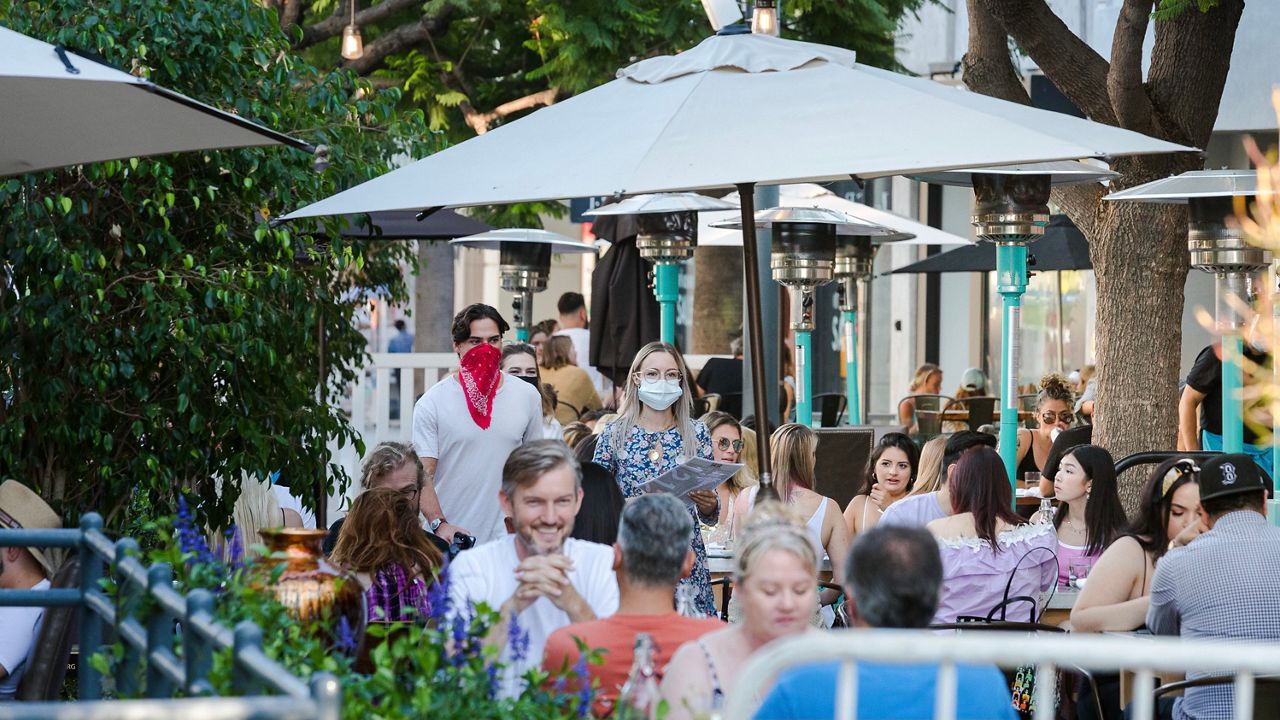SANTA MONICA, Calif. — If you’ve been to Santa Monica, chances are you’ve visited the Third Street Promenade. Packed with stores and restaurants in a three-block, largely car-free strip, it’s been a vibrant lure for the coastal city, attracting locals, tourists, and visitors from the greater L.A. area and generating 15% of its total sales tax revenue.
But, like most malls in the country, the Promenade has suffered in recent years, as shoppers move online and restaurants struggle to stay afloat amid ever-shifting COVID restrictions. Almost 40% of its storefronts are currently vacant; more than half of them cleared out before the pandemic, according to a Santa Monica city spokesperson.
“Inevitably, this happens,” said Santa Monica Mayor Pro Tem Kristin McCowan. “What people seek out when they visit an iconic place like the Promenade is different than 30 years ago when it was first created.”
So the city is looking to reinvent it. Under a plan called Promenade 3.0, city leaders are considering a variety of strategies that would radically change its look and feel. Large storefronts with big-box retailers could be cut into smaller spaces and leased to independent shops. The sidewalk dining that was set up during COVID could become permanent.
The upper floors of buildings that have long been home to retail giants like the Gap and Banana Republic could morph into housing or offices. The basements of those same buildings could be repurposed into nightclubs and live music venues. And the alleys behind them could also be reinvented to offer new amenities.
“We want the Third Street Promenade to be an 18-hour venue. Not 18 hours of frenzy, but 18 hours of good commercial use, whether it’s an early morning farmers market or a place for the people who live here to be able to go out for a drink,” said Kathleen Rawson, chief executive of Downtown Santa Monica, Inc.
The place management firm has been collaborating with the city of Santa Monica on the Third Street Promenade revitalization plan for at least two years.
“A lot of our focus then was on the public space and public infrastructure improvement program, but with COVID and the challenges with raising money to do that,” she said, “we’ve paused that effort and instead looked at the private space and putting together a program that incentivizes owners to rehabilitate their buildings into spaces that retail now finds desirable or to expand different kinds of uses.”
One of those buildings is a former Banana Republic at the Promenade’s northern end on Wilshire. With a ground floor, upstairs, and full basement, it is 40,000 square feet – a square footage more reasonable for a Costco or Target these days. The space was recently gutted and is in the process of being leased for a “use that hasn’t been on the Promenade in many years,” said Jeff Kreshek, Federal Realty’s senior president for west coast leasing, which owns the building.
Federal Realty owns several additional properties on the Promenade, including spaces currently occupied by J Crew, Old Navy, and the Cabo Cantina and others that were formerly occupied by Club Monaco, Adidas, Madewell, and Steve Madden.
“I’d like the urban core to become more vibrant with a mix of uses. Maybe using second floors as offices, bringing some uses that haven’t been on the Promenade traditionally,” Kreshek said, citing “digitally native brands, and up-and coming brands as opposed to national retailers. It’s legacy brands that have fallen out of favor. How do you repurpose their space into smaller spaces, a mix of uses? That's what I'd like to see on the Promenade.”
The revitalization plan is designed to appeal to the three main groups of people who visit the Promenade: residents, regional visitors, and tourists, which generate 14%, 45%, and 41% of sales respectively, according to the city. Most of the buildings along the Promenade average 7,500 to 10,000 square feet, whereas the majority of retailers are looking for spaces of 2,500 square feet, Rawson said.
There are currently 66 tenants on the Promenade. The pedestrian mall stretches three blocks of Third Street, from Broadway to Wilshire, two blocks east from the ocean. It first opened in 1989, when malls across the country were in their heyday.
“The Promenade, like every other district, has found itself with a model that’s no longer really suited to where the world is going,” said Robert Resnick, a Promenade building owner who cut the ribbon on the project in 1989.
The Promenade’s location endows it with “tremendous inherent resources,” he said. “You have the beach environment, the pedestrian mall, a large number of city parking structures that make it convenient for people to come. It’s our job to be sure that we provide them the environment that invites customers back again and again.”
Since 1988, Resnick has owned the 35,000-square-foot building that used to be home to the Gap on the Promenade. It’s now empty, and Resnick is part of a six-person task force DTSM created to develop a new vision for the Promenade that will see it through its next 30 years. That task force is working with the DTSM board to develop a plan it will deliver to the Santa Monica City Council by summer, though significant changes are likely to take years.
“The Promenade has had a long, long run,” Resnick said. “And like establishments in every environment, there comes a time where you need to update yourself.”



